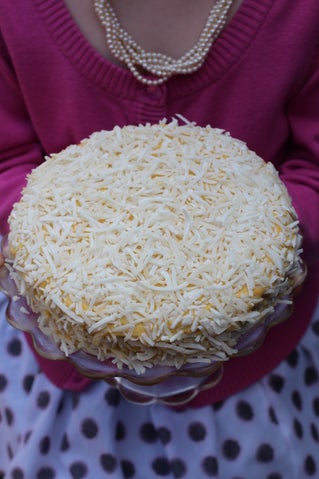Coconut - Classy and Chic
He who plants a coconut tree plants food and drink, vessels and clothing, a home for himself and a heritage for his children
-- South Seas saying

The coconut is not really a “nut” it is really a “drupe” or a fruit with a hard stone; the coconut you buy with its fibrous outer is the stone of the fruit, the husk having been removed.
From the coconut itself we get coconut water, milk, cream and coconut “meat” . From the tree we obtain wood for cooking, materials and fibres for building and textiles, thatching and basket-making; the coarse “hair” is made in to coir mats, ropes, as stuffing fibre and for caulking boats; the oil from the meat is used in cosmetics and medical supplies and the empty shells act as utensils.
In our modern kitchens, with international dishes a regular feature on our weekday menus, we probably don’t give too much thought to the coconuts heritage, when we grab a packet of desiccated coconut or a can of coconut cream. But it was not that long ago that coconut was a very special treat in our pantry. Original Anzac biscuits recipes do not call for it, probably due to its lack of availability and early recipes use only a few tablespoons, so special was coconut – an then it was only finely desiccated.
Keep desiccated coconut in the freezer; like other nuts, the high oil content in the dried meat will become rancid in our warm climates. Add it to mixture straight from the freezer if wished.
Desiccated coconut Is the dried white meat, which is graded after processing- finest grade being “macaroon” but also includes flakes and threads .All three are used in a wide variety of dishes, including cakes, desserts and slices, as well as being served as a condiment with curries or used in the cooking.
Coconut water The refreshing liquid from the inside of the shell; it is especially nutritious and refreshing being used isotonic sports drinks. Mature fruits have less liquid than immature coconuts.
Coconut meat Is the firm white flesh of the seed can be grated or sliced and used fresh – it is divine.
Coconut cream and milk Both are made by pouring boiling water over the grated coconut flesh, then squeezing and straining the resulting pulp when it is cool. The amount of water added determines whether it is cream, which is thicker, or milk and if the same pulp is used several times, it will produce a progressively, less rich milk each time. Coconut milk can also be made from desiccated coconut.
Coconut oil Was once the most important vegetable oil in the world but the high saturated fat content meant it fell from grace. It is almost tasteless when processed and is used in the manufacture of margarine, confectionary and bakery good and for frying;in the south of India it is particularly important as a cooking oil.
COCONUT FACTS AND TIPS
The name is believed to originate from the Portuguese coco, meaning monkey or grinning face, maybe coming from the three “eyes” at the stem end of the nut.
Neither coconut cream nor milk will keep well, even in the refrigerator; it is best to freeze any leftovers; use an ice-cube tray, then store the frozen blocks in an airtight bag and use as required.
that it is very high in saturated fat, so if you’re watching your cholesterol, use “lite” coconut milk or cream.Check the labels to see what the ingredients are; some creams and milks contain emulsifiers, others do not and are correspondingly thicker and richer.
You can make your own coconut milk, by grating the meat, pouring over a cup of milk per coconut, massaging the mix and then straining it through cheesecloth.If you’re buying your own coconut, it should be heavy and make sure that when shaken, the coconut is full of water.If there’s no water, the nut is old and possibly rancid. Also, there should be no sign of leakage from around the three “eyes”.Coconut milk can also be made from desiccated coconut.
Don’t cook coconut cream or milk at high temperatures or it will curdle; simmer it gently and keep the lid off.If the recipe calls for boiling, add a teaspoon of cornflour to the dish which will help inhibit curdling.


Comments (0)
Please login to submit a comment.